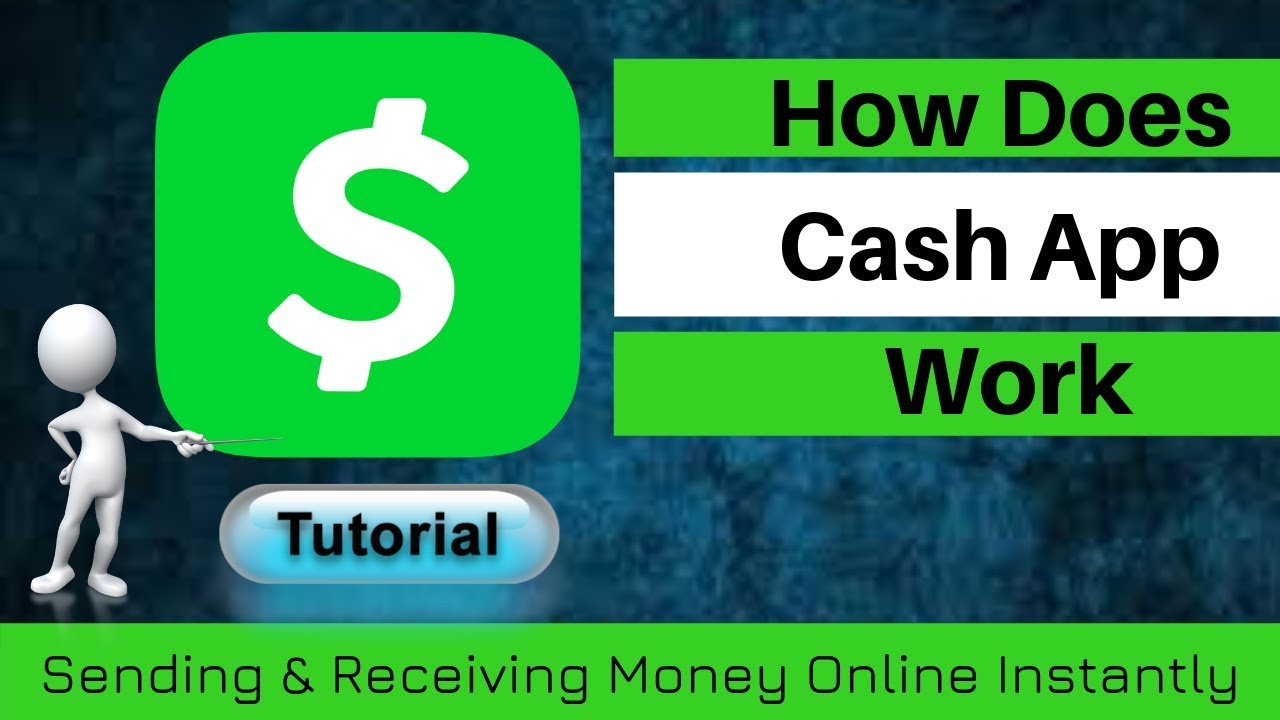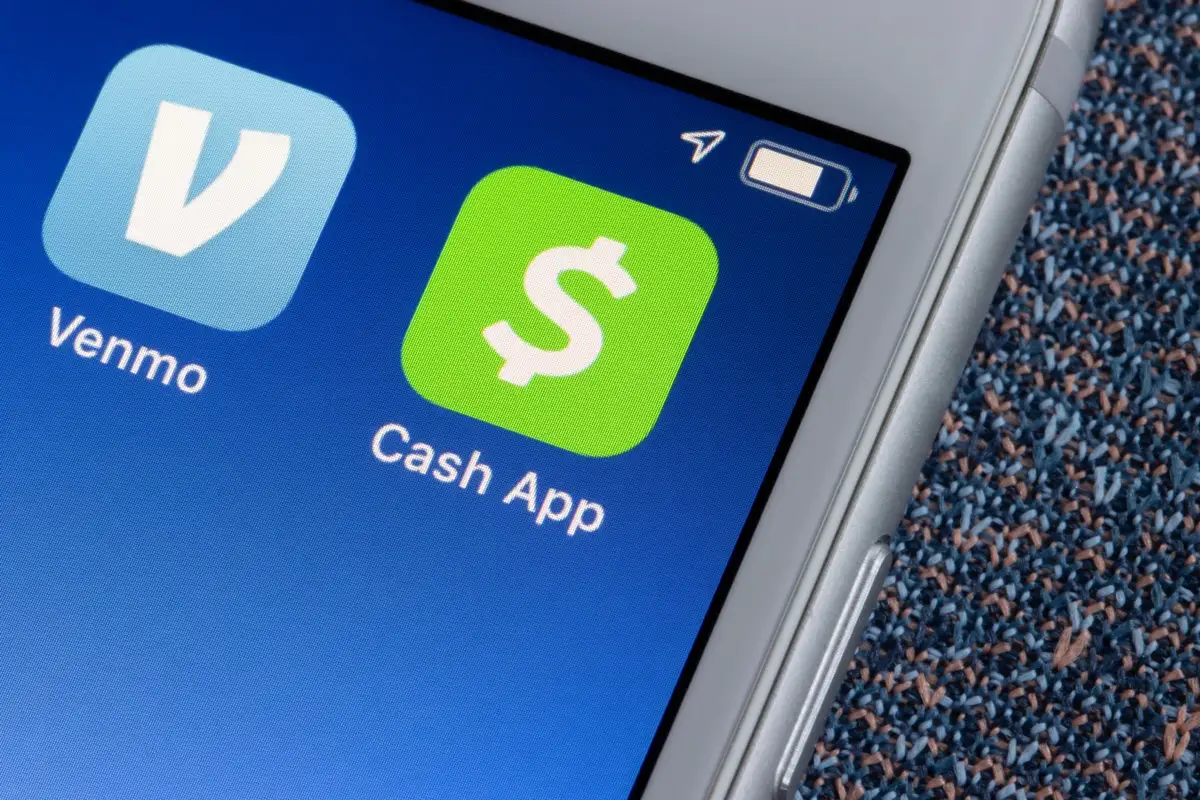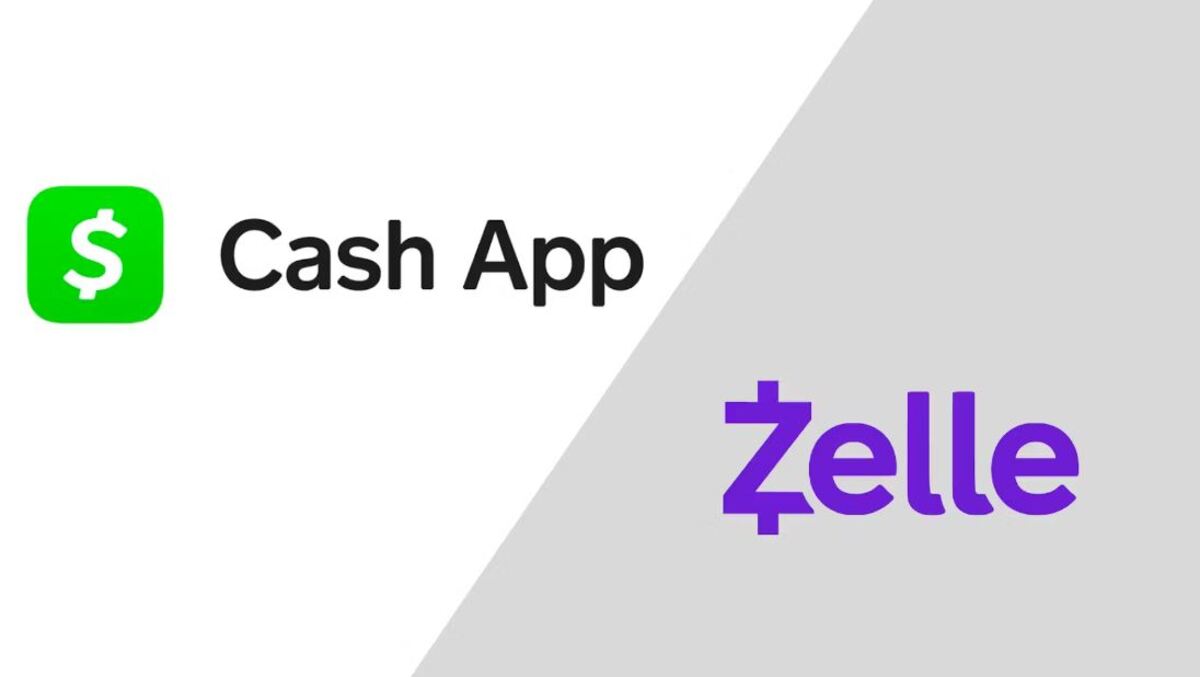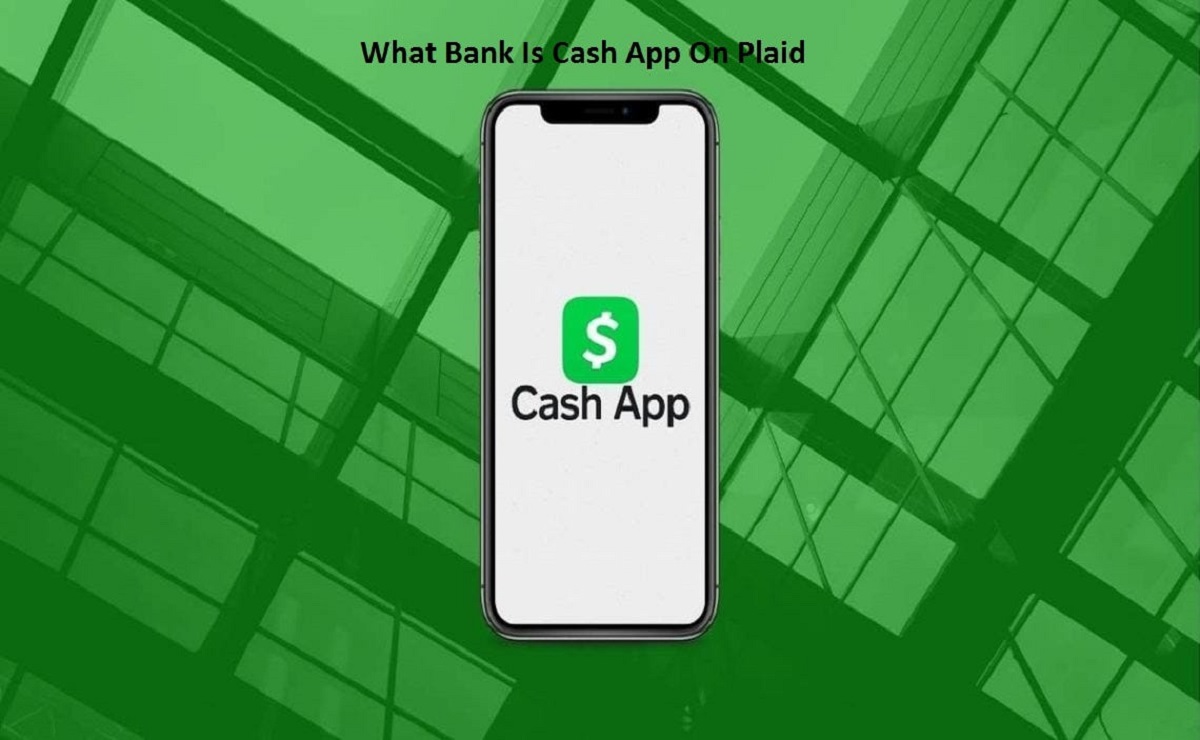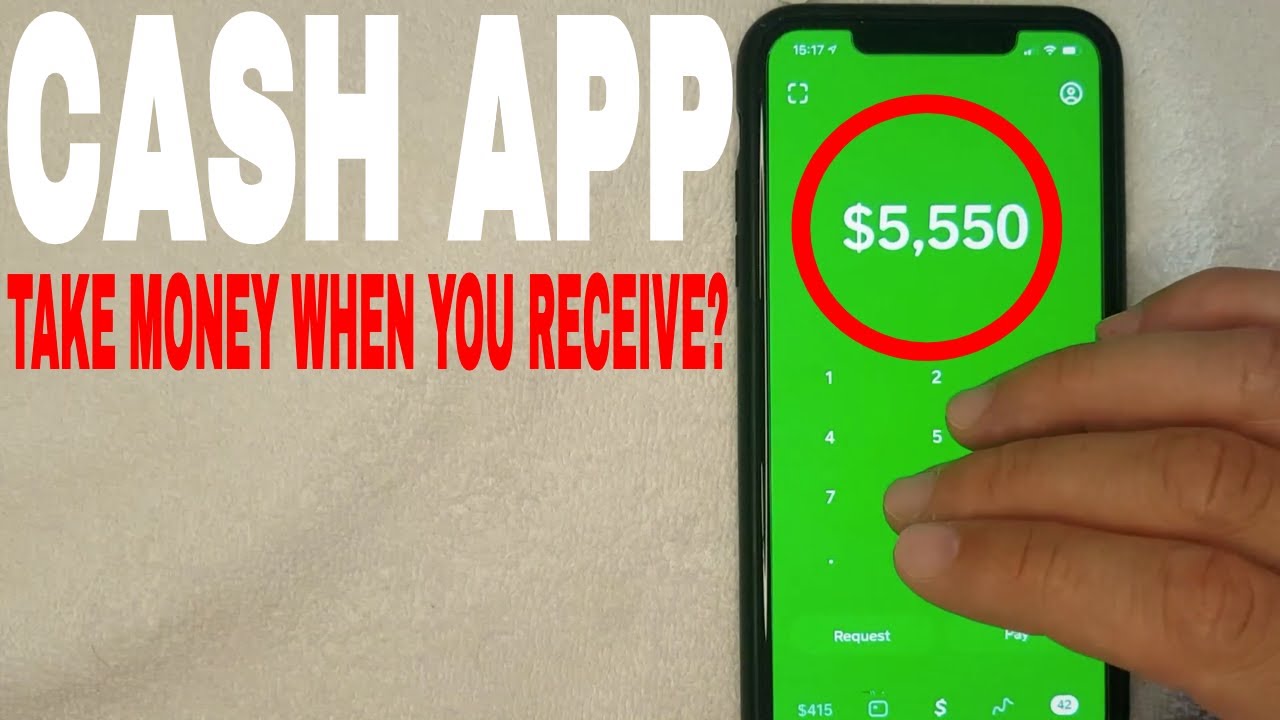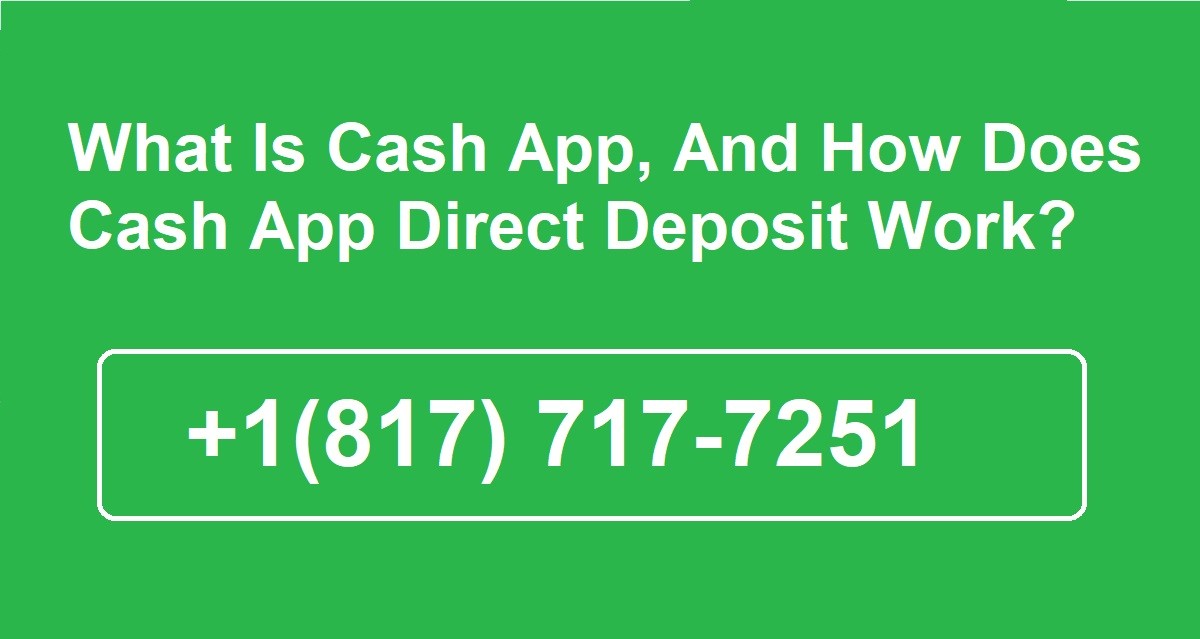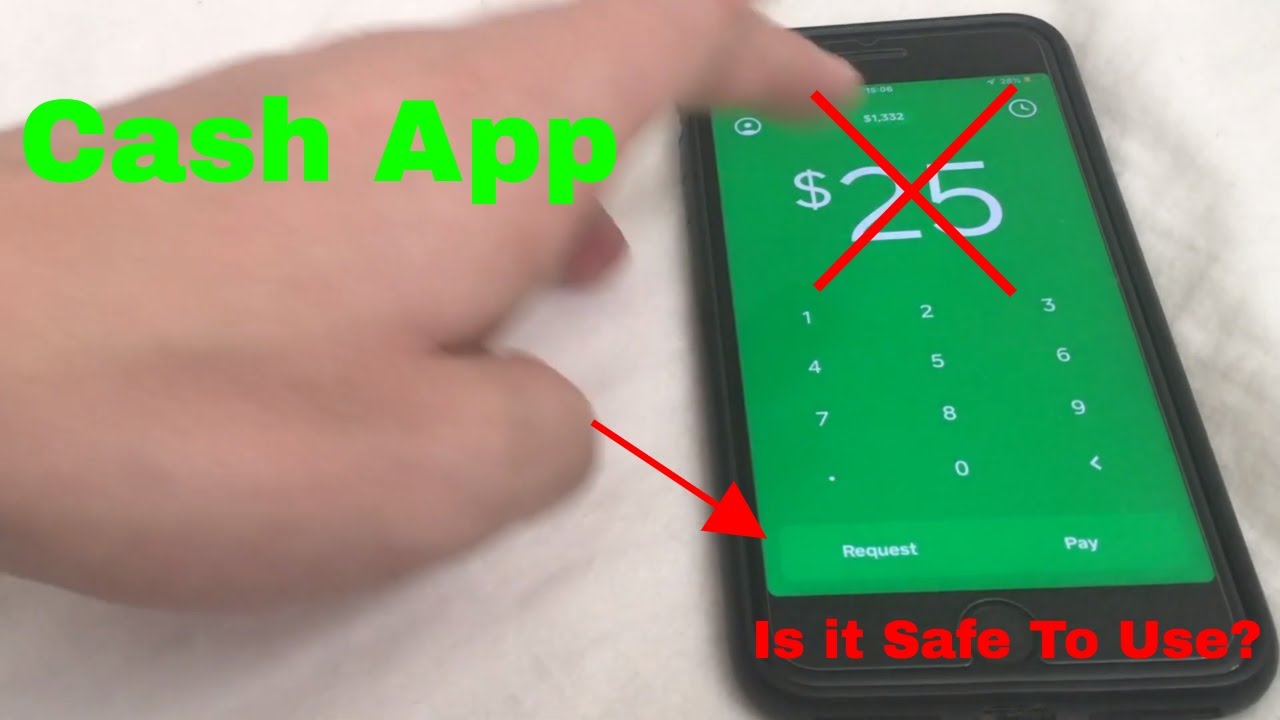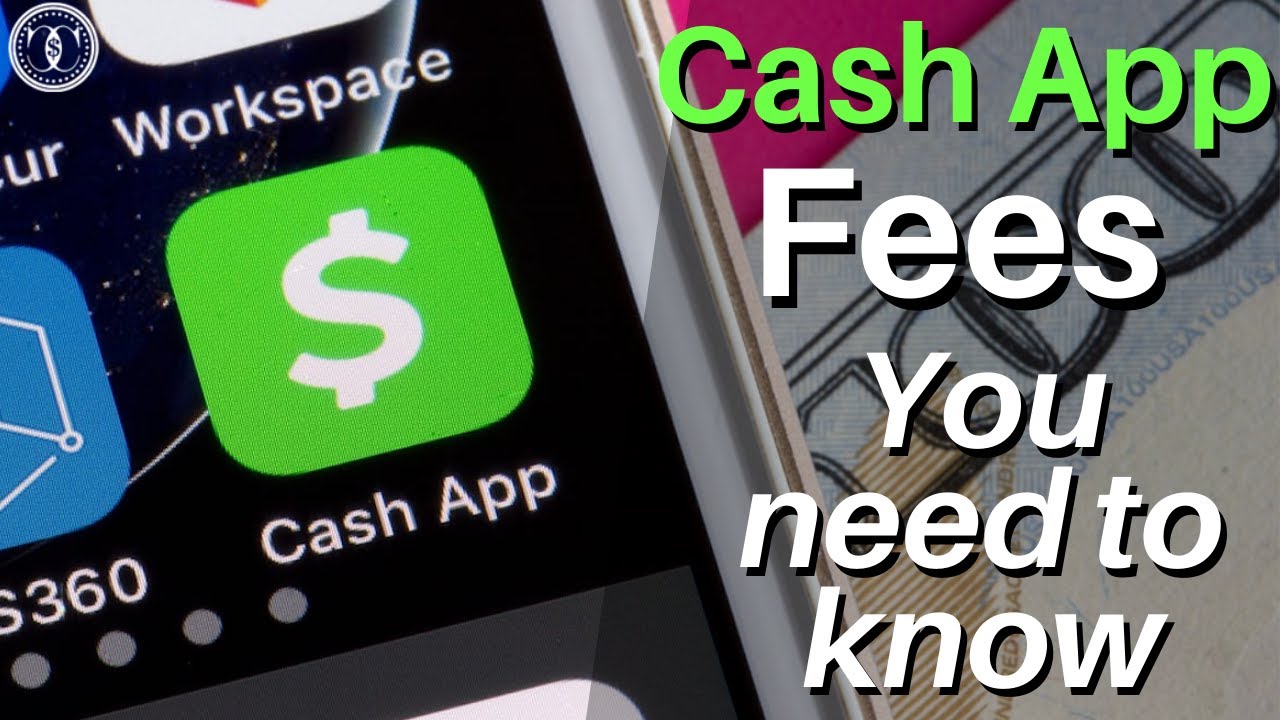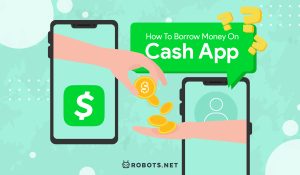What is Cash App?
Cash App is a mobile payment service developed by Square Inc. that allows users to send and receive money instantly. It is available for both iOS and Android devices, making it convenient for users across different platforms. With Cash App, you can easily split bills with friends, pay for goods and services, and even hold funds in a digital wallet.
One of the standout features of Cash App is its simplicity. Setting up an account takes just a few minutes, and once you have a verified account, you can add funds and start sending and receiving money right away. The app interface is user-friendly, ensuring seamless navigation for both tech-savvy individuals and those unfamiliar with mobile payment platforms.
Cash App also offers a Cash Card, which is a customizable prepaid debit card that is linked to your Cash App account. It can be used for purchases at any merchant that accepts Visa, allowing you to conveniently use your Cash App funds for everyday expenses. The Cash Card comes with its own security features, including the ability to freeze and unfreeze your card instantly within the app.
In addition to its core money transfer services, Cash App provides a range of additional features to enhance the user experience. These include Cash App Boosts, which offer discounts on popular brands and merchants, and the ability to buy and sell Bitcoin directly through the app.
Overall, Cash App provides a convenient and secure way to send and receive money, making it a popular choice for individuals and businesses alike. Its intuitive interface, coupled with its additional features, makes it stand out among other mobile payment services. Whether you need to pay a friend back for dinner or make a purchase at your favorite store, Cash App offers a hassle-free solution for all your financial needs.
Setting Up Your Cash App Account
Setting up your Cash App account is a simple process that can be completed in a few easy steps. Follow these instructions to get started:
- Download the Cash App on your mobile device from the App Store or Google Play Store.
- Open the app and enter your phone number or email address to create an account. You might be prompted to verify your email or phone number before proceeding.
- Create a unique and secure password for your account.
- Once you have verified your email or phone number and set a password, you will be asked to link a debit card to your account. This card will be used for adding funds to your Cash App account and making payments.
- Enter your debit card details, including the card number, expiration date, and CVV. You may also be required to provide your full name and billing address.
- After adding your debit card, you will have the option to customize your Cash App profile by adding a profile picture and username. This will make it easier for your friends to identify you on the platform.
- Finally, you will need to verify your identity by providing your full legal name, date of birth, and the last four digits of your Social Security number. This step is necessary to comply with financial regulations.
Once you have completed these steps, your Cash App account will be ready to use. You can start sending and receiving money, as well as explore the additional features and services that Cash App has to offer.
It is important to note that Cash App is designed for users who are at least 18 years old. If you are under 18, you may need to involve a parent or guardian in the setup process.
By following these simple steps, you can quickly create your Cash App account and begin enjoying the convenience and versatility of mobile payments.
Adding Money to Your Cash App Account
Adding money to your Cash App account is a straightforward process that allows you to conveniently fund your digital wallet for easy payments and transfers. Follow these steps to add money to your Cash App account:
- Open the Cash App on your mobile device and log into your account.
- Once you are logged in, tap on the “My Cash” tab at the bottom of the screen.
- Next, tap on the “Add Cash” button.
- Enter the amount of money you want to add to your account. You can either input a specific amount or choose from the preset options.
- After entering the desired amount, tap on the “Add” button.
- You will be prompted to enter your unique Cash App PIN or use touch ID to verify the transaction.
- If you have linked a debit card to your Cash App account, you can select it as the funding source. Alternatively, you can choose to add money from your linked bank account by tapping on the “Bank” option.
- Once you have selected the funding source, tap on the “Add Money” button to complete the transaction.
- Your Cash App account will be instantly updated with the added funds, and you can start using the money for payments or transfers.
It’s important to note that Cash App may charge a fee for adding money using a credit card. However, adding money via a linked bank account or debit card is generally free.
Additionally, Cash App has certain limits on how much money you can add or send within a specific time period. These limits can be increased by verifying your account and providing additional personal information.
By following these simple steps, you can easily add money to your Cash App account and have funds readily available for making transactions and payments.
Sending Money with Cash App
Sending money with Cash App is a quick and convenient way to transfer funds to friends, family, or businesses. Whether you need to split a bill, pay back a friend for dinner, or make a purchase, Cash App makes the process effortless. Here’s how to send money using Cash App:
- Open the Cash App on your mobile device and log into your account.
- On the Cash App home screen, enter the amount you want to send in the “To” field.
- You can enter a specific amount or use the option to split the payment equally with multiple recipients.
- Tap on the “Pay” button.
- You will be prompted to select a payment method. If you have multiple funding sources linked to your Cash App account, choose the one you prefer to use for the transaction.
- After selecting your payment method, you will have the option to add a note or memo to the payment. This can be useful for including details about the transaction or reminding the recipient of its purpose.
- Tap on the “Pay” button again to confirm the transaction.
- Once the payment is sent, you will receive a notification confirming the successful transfer of funds.
It’s important to note that if you are sending money to someone who does not have a Cash App account, they will receive a notification via text or email prompting them to create an account to claim the funds. If they do not claim the money within a certain period, it will be returned to your Cash App account.
Cash App also allows for additional features, such as requesting money from others and setting up recurring payments. These options can be accessed through the app’s user-friendly interface, making it simple to manage your financial transactions.
By following these steps, you can easily send money to anyone using Cash App, ensuring a hassle-free and secure transfer of funds.
Receiving Money with Cash App
Receiving money with Cash App is a seamless process that allows you to conveniently accept funds from friends, family, or businesses. Whether you are splitting expenses, receiving payment for goods or services, or simply collecting money from someone, Cash App makes it easy. Here’s how to receive money using Cash App:
- Open the Cash App on your mobile device and log into your account.
- On the Cash App home screen, you will see your available balance displayed prominently.
- If someone has sent you money, you will receive a notification and see the incoming payment reflected in your balance.
- Alternatively, you can tap on the “Request” tab at the bottom of the screen to generate a payment request from a specific contact or enter a custom amount.
- To request money, enter the amount you want to receive and add a note or memo if necessary.
- Tap on the “Request” button to send the payment request.
- Your contact will receive a notification, and they can choose to accept the request and send the funds directly to your Cash App account.
- Once the payment is successfully received, you will be notified, and the funds will be added to your available balance.
It’s important to note that there are no fees for receiving money with Cash App. The funds will be available in your Cash App account for immediate use or can be transferred to your linked bank account at any time.
Additionally, Cash App offers the option to enable automatic deposits, which allows you to receive your paycheck or government benefits directly into your Cash App account. This feature eliminates the need to physically cash checks or visit a bank.
By following these simple steps, you can easily receive money with Cash App and have the funds readily available for your financial needs.
Cash App Card and its Features
The Cash App Card is a physical debit card that is linked to your Cash App account, enabling you to access and use your funds for everyday purchases. With its sleek design and convenient features, the Cash App Card offers a seamless payment experience. Here’s an overview of the features and benefits of the Cash App Card:
1. Instant Accessibility: Once you order and activate your Cash App Card, you can use it to make purchases and withdraw money from ATMs immediately. This allows you to access your funds on the go, without the need to transfer money to a separate bank account.
2. Customizable Design: The Cash App Card allows you to personalize its design by selecting from a range of unique color options and designs. Customizing your card adds a touch of personalization and makes it easy to identify among other cards in your wallet.
3. Real-time Spending Notifications: Whenever you make a purchase or transaction using your Cash App Card, you will receive real-time notifications on your mobile device. This helps you keep track of your spending and stay updated on your account activity.
4. Boosts and Discounts: Cash App offers a feature called “Boosts” that allows you to earn discounts and cashback rewards at select merchants when you use your Cash App Card. These Boosts can be activated from the app and can help you save money on everyday purchases.
5. Security Features: The Cash App Card provides advanced security features to ensure the safety of your funds. You can easily freeze and unfreeze your card through the app if it gets lost or stolen, preventing unauthorized transactions. Additionally, all transactions made with the Cash App Card are protected by encryption and fraud prevention measures.
6. Direct Deposit: The Cash App Card allows you to set up direct deposit, enabling you to have your paycheck or government benefits automatically deposited into your Cash App account. This provides added convenience and eliminates the need for paper checks or visiting a bank for deposit.
7. ATM Withdrawals: You can use your Cash App Card to withdraw cash from ATMs. Cash App provides a list of fee-free ATMs, and if you withdraw from a non-fee-free ATM, Cash App may reimburse you for the ATM fee.
The Cash App Card is a powerful tool that enhances your financial capabilities and provides a seamless way to access and use your Cash App funds for everyday expenses. With its customizable design and convenient features, the Cash App Card offers a unique and user-friendly payment experience.
Cash App Boosts and Discounts
Cash App offers an exciting feature called “Boosts” that allows users to earn discounts and cashback rewards at select merchants when making purchases with their Cash App account or Cash App Card. This feature enhances the overall user experience and provides additional value to Cash App users. Here’s how Cash App Boosts and discounts work:
1. Activating Boosts: To start enjoying Boosts, open the Cash App on your mobile device and navigate to the “Cash Boosts” section. Here, you will find a range of Boost offers available from various merchants. Choose the Boost that interests you by tapping on it, and it will be activated on your Cash App account.
2. Select Merchants: Cash App has partnered with popular national and local merchants to offer Boosts. These merchants can range from coffee shops and restaurants to clothing stores and ride-sharing services. The Boosts available may vary depending on your location.
3. Cashback and Discounts: Once a Boost is activated, you will receive a discount or cashback reward when making a purchase at the participating merchant. The reward will be automatically applied when you use your Cash App account or Cash App Card to pay for the transaction. The amount of the reward or discount may vary for each Boost and will be clearly defined in the Boost details.
4. Tracking Boost Usage: The Cash App provides a section where you can easily track your Boost usage and the savings you have accumulated. This makes it simple to monitor your rewards and see the value you are receiving from participating in Boosts.
5. Limitations and Conditions: It’s important to note that Boosts may have limitations and conditions, such as a maximum savings amount or a limited time frame during which you can use the Boost. Be sure to review the Boost details and any applicable terms and conditions to make the most of the discounts and rewards.
6. New Boosts: Cash App frequently updates its Boost offerings, adding new merchants and opportunities for savings. Keep an eye out for new and exciting Boosts that can provide even more value for your Cash App experience.
Cash App Boosts and discounts provide an excellent way to save money and earn rewards while using the app for your everyday transactions. By taking advantage of Boosts, you can enjoy discounts at your favorite merchants and maximize the benefits of using Cash App.
Cash App Bitcoin Feature
Cash App offers a unique feature that allows users to buy, sell, and hold Bitcoin directly within the app. Bitcoin, the world’s most popular cryptocurrency, provides an alternative form of digital currency that can be used for various transactions and investments. Here’s an overview of Cash App’s Bitcoin feature and how you can make the most of it:
1. Buying Bitcoin: With Cash App, you can easily buy Bitcoin by following a few simple steps. Open the app, navigate to the “Investing” tab, and select “Bitcoin”. Enter the amount you want to purchase or choose from preset options. Then, confirm the transaction and the Bitcoin will be added to your Cash App balance.
2. Selling Bitcoin: If you want to sell your Bitcoin, Cash App allows you to do so effortlessly. Go to the “Investing” tab, select “Bitcoin”, and tap on “Sell”. Enter the desired amount or choose from preset options, and confirm the transaction. The funds from the sale will be added to your Cash App balance for you to use or withdraw.
3. Holding Bitcoin: Cash App provides users with the ability to hold their Bitcoin within the app. This means you can store your Bitcoin securely and easily access it whenever you want. Your Bitcoin holdings will be added to your Cash App balance, along with any funds you have in traditional currency.
4. Bitcoin Transfers: Cash App also allows you to send Bitcoin to other Cash App users or external Bitcoin wallets. Simply navigate to the “Investing” tab and select “Bitcoin”. From there, tap on “Send” and enter the recipient’s Bitcoin address or scan their Bitcoin QR code. Confirm the transaction, and the Bitcoin will be transferred.
5. Bitcoin Price Alerts: Stay up to date with the Bitcoin market by setting price alerts within Cash App. You can choose to be notified when the price of Bitcoin reaches a certain value, enabling you to make informed decisions about buying, selling, or holding your Bitcoin.
It’s important to note that Bitcoin transactions may be subject to fees and market volatility. Cash App provides transparency about all fees involved, and the Bitcoin price is determined by the market at the time of the transaction.
Cash App’s Bitcoin feature offers an accessible and user-friendly way to engage with the world of cryptocurrency. Whether you are a seasoned Bitcoin investor or just starting to explore this digital currency, Cash App provides a convenient platform to buy, sell, and hold Bitcoin.
Cash App Security and Safety
Cash App takes the security and safety of its users’ funds and personal information seriously. The app implements various measures to ensure that your financial transactions and data are protected. Here are the key security features and practices of Cash App:
1. Encryption and Data Protection: Cash App utilizes industry-standard encryption protocols to protect your personal and financial information. This ensures that your data is securely transmitted and stored, guarding against unauthorized access.
2. Account Verification Process: When setting up your Cash App account, there is a verification process to confirm your identity. This includes providing your full legal name, date of birth, and the last four digits of your Social Security number. This verification process helps prevent fraudulent activities and protects against unauthorized use of the app.
3. PIN, Touch ID, and Face ID: Cash App offers multiple layers of authentication to ensure that only authorized individuals can access your account. You can set up a unique PIN for the app, and if your device supports it, you can also use Touch ID or Face ID for biometric authentication.
4. Two-Factor Authentication (2FA): Cash App provides the option to enable two-factor authentication, adding an extra layer of security to your account. With 2FA enabled, you will receive a verification code through a text message or email each time you log in or initiate certain transactions.
5. Card Locking Feature: If your Cash App Card is misplaced or stolen, you can quickly freeze it within the app. This lock feature prevents unauthorized use and can be easily reversed when you locate your card or need to unfreeze it.
6. Fraud Prevention Measures: Cash App employs advanced fraud prevention algorithms and technologies to monitor and detect suspicious activities. If any unauthorized or fraudulent transactions are identified, Cash App takes immediate action to protect your funds and investigate the issue.
7. Email and Notification Security: Cash App is vigilant about protecting its users against phishing and scam attempts. The app sends regular security notifications and advises users to be cautious when sharing sensitive information or clicking on suspicious links.
Cash App also provides a comprehensive support center with FAQs and resources to address common security concerns. Additionally, if you encounter any security issues or have concerns about your account, you can reach out to Cash App’s customer support for assistance.
By implementing these security measures and staying vigilant in keeping your account information safe, you can confidently use Cash App knowing that your money and personal data are well-protected.
Cash App Fees and Limits
Cash App offers a transparent fee structure and sets certain limits to ensure the smooth operation of the platform. Understanding the fees and limits of Cash App is important to effectively manage your transactions and financial activities. Here’s an overview of the fees and limits associated with Cash App:
1. Cash App Fees: Cash App generally does not charge fees for standard transactions, such as sending and receiving money with friends or family. However, there are a few instances where fees may apply, such as when making instant transfers or depositing money using a credit card. Cash App provides clear information about any applicable fees before you confirm a transaction.
2. Cash App Card Fees: Cash App may charge fees for certain activities related to the Cash App Card. For example, there may be fees for using an out-of-network ATM or requesting a physical Cash App Card for replacement. These fees are clearly outlined in the app, allowing you to make informed decisions.
3. Cash App Limits: Cash App sets certain limits to protect users and prevent misuse of the platform. These limits include the maximum amount of money you can send and receive within a specified time period. Initially, Cash App imposes lower limits with the option to increase them through a verification process, such as providing additional personal information.
4. Bitcoin Fees and Limits: Cash App charges fees for Bitcoin transactions, which may vary depending on the market conditions and transaction size. Bitcoin transactions also have limits imposed to comply with regulatory requirements and ensure the smooth functioning of the app’s Bitcoin feature.
It’s important to note that while Cash App strives to provide accurate and up-to-date fee information, fees and limits are subject to change. Therefore, it’s recommended to review the latest information within the app or on the Cash App website.
When using Cash App, it’s essential to consider the fees and limits associated with different transactions to make informed financial decisions. By understanding the applicable fees and limits, you can effectively manage your money and maximize the benefits of using Cash App for your financial transactions.
Troubleshooting Common Issues with Cash App
While Cash App strives to provide a seamless user experience, there may be times when you encounter issues or have questions about the app’s functionality. Here are some common issues that users may come across when using Cash App, along with troubleshooting steps to help resolve them:
1. Payment Declined: If a payment you initiated on Cash App gets declined, ensure that you have sufficient funds in your Cash App balance or linked bank account. You may also want to check if there are any connectivity issues with your internet connection. If the issue persists, reach out to Cash App’s customer support for further assistance.
2. Card Not Working: If your Cash App Card is not working, make sure that the card is not frozen or locked within the app. Verify that the card details, such as the expiration date and CVV, are entered correctly when making a payment. If the problem persists, contact Cash App support to investigate the issue.
3. Unable to Add a Bank Account: If you are having trouble adding a bank account to Cash App, ensure that you are entering the correct account details and that your bank supports linking with Cash App. Double-check the account and routing numbers to avoid any errors. If the problem persists, reach out to Cash App support for assistance with the verification process.
4. Delayed or Failed Bitcoin Transactions: If you are experiencing delays or failures with Bitcoin transactions on Cash App, check the Bitcoin network status to ensure there are no widespread issues. You can also verify that the transaction details, such as the recipient’s Bitcoin address, are correct. If the problem persists, contact Cash App support for further guidance.
5. Unauthorized Transactions: If you notice any unauthorized transactions or suspicious activity on your Cash App account, report it immediately to Cash App’s customer support. They will investigate the issue and take appropriate action to safeguard your funds and secure your account.
6. Delayed Deposits: If you are expecting a deposit into your Cash App account and it is delayed, double-check the expected time frame for the deposit to appear. Deposits made outside of regular banking hours or on weekends and holidays may take longer. If the deposit does not appear after the expected time, contact Cash App support for assistance.
It’s important to note that in most cases, reaching out to Cash App’s customer support is the best way to resolve any issues or concerns. They have dedicated support professionals who can guide you through the troubleshooting process and provide specific solutions based on your situation.
By being aware of common issues and taking the appropriate troubleshooting steps, you can quickly resolve any challenges you may encounter while using Cash App and continue enjoying its convenient features for your financial transactions.
Conclusion
Cash App is a versatile and user-friendly mobile payment service that allows users to send and receive money, make purchases, and even invest in Bitcoin. With its intuitive interface, various features, and emphasis on security, Cash App has become a popular choice for individuals and businesses alike.
In this article, we covered the key aspects of Cash App, including setting up your account, adding money, sending and receiving money, using the Cash App Card, and taking advantage of Boosts and discounts. We also explored the Bitcoin feature and discussed the security measures put in place by Cash App to protect your funds and personal information. Additionally, we highlighted common troubleshooting steps for resolving issues that may arise while using Cash App.
By leveraging Cash App’s features and capabilities, users can seamlessly manage their finances, split bills with friends, pay for goods and services, and easily access their funds. The Cash App Card provides an added layer of convenience, allowing users to use their Cash App balance for everyday purchases.
It’s important to be mindful of the fees and limits associated with Cash App transactions and to stay vigilant about security practices, such as safeguarding your account information and reporting any unauthorized activity promptly. Cash App’s customer support is available to help address any issues or concerns that may arise while using the app.
In conclusion, Cash App offers a convenient and secure solution for all your payment needs, from the simplicity of sending money to the versatility of using the Cash App Card and even exploring the world of Bitcoin. Whether you’re splitting a bill with friends, making online purchases, or simplifying your financial transactions, Cash App provides a user-friendly platform that enhances your financial capabilities.







